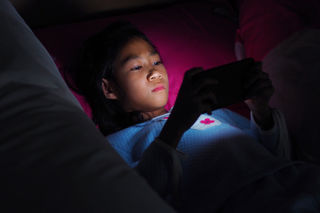Play
35 Activities to do with your Child
And why none of them involve TV, computers, video game players, or smartphones.
Posted October 3, 2017
The warning signals are getting louder. Today’s children are stressed out, unfocused, sleep-deprived, and moody because of over-using video game players, smartphones, tablets, television, and computers.
In my office every day, I see kids who are fidgety, inattentive, unfocused, anxious, uncommunicative, naughty, or sad. The corners of their mouths turn down.

Many of these children have been over-exposed to electronic screens, sometimes since they were just 2 years old. They have never played active childhood games with their parents like “Simon says,” “hide and seek,” or “tag.” These simple games have survived over the centuries because the physical activity and interaction with parents or peers promotes healthy brain development in children.
But today, children by and large lead indoor, sedentary lives in front of smartphones, video game players, and TV. They get just about every kind of electronic gadget they want, but not enough of what they really need for healthy development—that is, consistent face-to-face playful interactions with their parents. As pediatrician and psychiatrist D. W. Winnicott famously observed, babies respond to mirroring—seeing themselves reflected in a parent. Watching their mother doing something on a media screen does not do the job.
Even technocrat Melinda Gates warns about the negative effects of technology on today’s children. In a recent Washington Post column, she wrote:
“…as a mother who wants to make sure her children are safe and happy, I worry. And I think back to how I might have done things differently. Parents should decide for themselves what works for their family, but I probably would have waited longer before putting a computer in my children’s pockets.”
Recently, on the PBS News Hour, Gates said that children need to have real face-to-face conversations with people and learn to empathize with others. Even though technology offers many benefits to kids, it doesn’t teach them critical communication skills. It doesn’t prepare them for social interactions in the real world.
Weaning children from media screens is not for the faint at heart. It is best done gradually, substituting other activities for screen use.
Clinical psychologist Sabine Duflo suggests a four-step plan to remove or reduce screens from a child’s daily life: 1) No screen use in the morning; 2) No screen use during meal times; 3) No screen use before sleeping; 4) No screen media in your child’s bedroom.
Below, I have some suggestions for parents who want to replace screens with other activities. This list just offers suggestions. I’m sure parents can come up with their own novel ideas.
1. Take your child to the park.
2. Ride bikes together.
3. Take your child to the public library (and attend “story time” if your library offers it). Help her pick out books that she is interested in.
4. Read to/with your child.
5. Take your child fishing.
6. Bake cookies together.
7. Make play dough together and then enjoy shaping it (easy recipes for play dough are available online).
8. Take him on a hike or nature walk.
9. Take him to a community pool and teach him to swim.
10. Walk or ride bikes to school with him (if safe and feasible).
11. Take him to the Zoo.
12. Play Checkers.
13. Play Monopoly.
14 Play Parcheesi.
15. Play Othello (the board game).
16. Play a card game like “Uno” or “Go Fish.”
17. Color in coloring books together.
18. Enjoy finger painting together.
19. Make a sandbox (a kitty litter box and sand from the local hardware store will do just fine) and let your child decorate it with natural objects like acorns, stones, leaves, etc.
20. Involve your child in gardening or help her start and care for an indoor plant.
21. Take her to a farmer’s market and point out all the different fruits and vegetables.
22. Play music and dance around the house together.
23. Blow bubbles.
24. Take your child to the beach and build sand castles.
25. Fly a kite together.
26. Teach him to make model airplanes out of paper.
27. Help her make a home-made birthday card for a family member.
28. Play hide and seek.
29. Play hopscotch.
30. Play “Simon Says”
31. Make caramel corn together.
32. Play tic-tac-toe.
33. Take your child camping and encourage him to explore nature.
34. Play ghost.
35. Let your child “help” you make dinner or put away the laundry (even if it’s a little more work for you).


